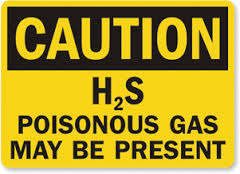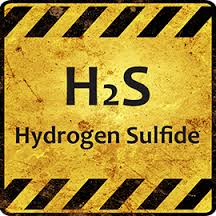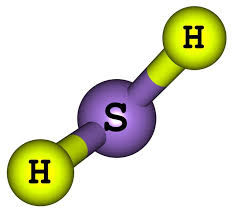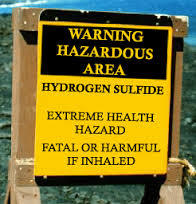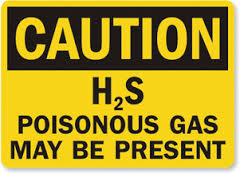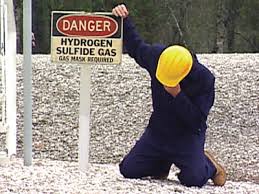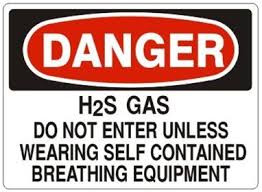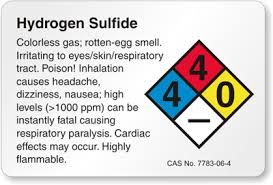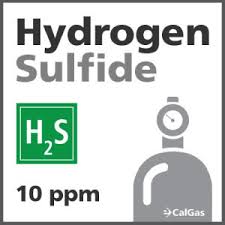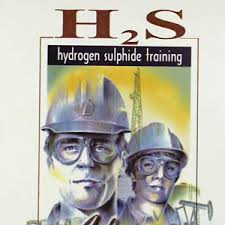Hydrogen Sulfide(H2S) Safety:
Overview: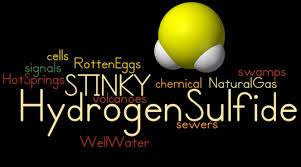
Hydrogen Sulfide or sour gas (H2S) is a flammable, colorless gas that is toxic at extremely low concentrations. It is heavier than air, and may accumulate in low-lying areas. It smells like "rotten eggs" at low concentrations and causes you to quickly lose your sense of smell. Many areas where the gas is found have been identified, but pockets of the gas can occur anywhere.
Iron sulfide is a byproduct of many production operations and may spontaneously combustion with air.Flaring operations associated with H2S production will generate Sulfur Dioxide (S02), another toxic gas.
Active monitoring for hydrogen sulfide gas and good planning and training programs for workers are the best ways to prevent injury and death.
Hazards of hydrogen sulfide:
Hydrogen Sulfide gas is very corrosive and causes metals to become brittle. Therefore, employers need to take special precautions when choosing equipment when they may reasonably expect to encounter H2S. This may include appropriate H2S trimming of equipment in accordance with National Association of Corrosion Engineers (NACE) Standards.
All well-drilling sites should be classified according to areas of potential and/or actual exposure to H2S. The recommendations and employee instruction will vary depending on the type of area. The four hazard levels are:
- No Hazard Condition
- API Condition I - Low Hazard
- API Condition II - Medium Hazard
- API Condition III - High Hazard
No Hazard Condition:
Any well that will not penetrate a known Hydrogen Sulfide formation would be categorized as a No Hazard Area. Special Hydrogen Sulfide equipment is not required.
Low Hazard:
Work locations where atmospheric concentrations of H2S are less than 10ppm.
Recommended for Area:
- Hydrogen Sulfide warning sign with green flag warning device present.
- Keep all safety equipment in adequate working order.
- Store the equipment in accessible locations.
Medium Hazard:
Work locations where atmospheric concentrations of H2S are greater than10ppm and less than 30ppm.
Recommended for Area:
- Legible Hydrogen Sulfide warning sign with yellow flag warning device present.
- Keep a safe distance from dangerous locations if not working to decrease danger.
- Pay attention to audible and visual alarm systems.
- Follow the guidance of the operator representative.
- Keep all safety equipment in adequate working order.
- Store the equipment in accessible locations.
- An oxygen resuscitator.
- A properly calibrated, metered hydrogen sulfide detection instrument.
High Hazard:
Work locations where atmospheric concentrations of H2S are greater than 30ppm.
Recommended for Area:
- Post legible Hydrogen Sulfide warning sign with red flag warning device.
- Post signs 500 feet from the location on each road leading to the location, warning of the hydrogen sulfide hazard.
- Check all Hydrogen Sulfide safety equipment to ensure readiness before each tour change.
- Establish a means of communication or instruction for emergency procedures and maintain them on location, along with contact information of persons to be informed in case of emergencies.
- Ensure usability of two exits at each location.
- Do not permit employees on location without hydrogen Sulfide safety training. (Employees may be permitted on location for specific Hydrogen Sulfide training purposes that does not include general rig training.)
- Pay attention to audible and visual alarm systems.
- Store the equipment in accessible locations.
- Two Hydrogen Sulfide detectors should be present (one should be a properly calibrated, metered detection instrument, and the other should be a pump type with detector tubes. The maximum permissible exposure limit (PEL) is 20 ppm. Respiratory protection would be required if periodic testing indicates employee exposures to H2S at concentrations above the PEL. ,
- Oxygen resuscitator.
- Three wind socks and streamers.
- Two 30-minute, self-contained breathing apparatus for emergency escape from the contaminated area only.
Release of H2S:
All personnel working in an area where concentrations of Hydrogen Sulfide may exceed the 10 Parts Per Million (PPM) should be provided with training before beginning work assignments.
Potential Hazard: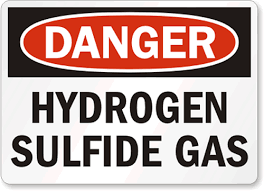
- H2S exposure greater than the Permissible Exposure Limit (PEL).
Possible Solutions:
Implement an H2S contingency plan including, but not limited to:
- Appropriate instruction in the use of hydrogen sulfide safety equipment to all personnel present at all hydrogen sulfide hazard areas.
- Gas detection where hydrogen sulfide may exist.
- Appropriate respiratory protection for normal and emergency use.
Metal Fatigue:
Metal fatigue, including hydrogen embrittlement or sulfide stress cracking, can result in a release of hydrogen sulfide gas.
Potential Hazard:
- Being exposed to Hydrogen Sulfide.
- Getting Injured due to equipment failure.
Possible Solutions:
- Select materials in accordance with the criteria for H2S service.
- Treat drilling fluids to chemically reduce corrosion failures.
Accumulation of H2S:
It is possible for hydrogen sulfide gas to accumulate in any low /enclosed area,such as a gas venting system, mud system, cellars, pits, and tanks.
Potential Hazard:
- Being exposed to Hydrogen Sulfide.
Possible Solutions:
- Provide adequate ventilation for the removal of any accumulation of H2S.
- Implement effective confined space entry program.
Physical Properties and Physiological Effects of Hydrogen Sulfide:
Physical Data:
- Chemical Name: Hydrogen Sulfide
- CAS Number: 7783-06-4
- Synonyms: Sulfured hydrogen, hydro sulfuric acid, dihydrogen sulfide
- Chemical Family: Inorganic sulfide
- Chemical Formula: H2S
- Normal Physical State: Colorless gas, slightly heavier than air. Vapor density (specific gravity) at 59°F (15°C) and 1 atmosphere = 1.189.
- Auto ignition Temperature: 500º F
- Boiling Point: -76º F
- Melting Point: -117.2º F
- Flammable Limits: 4.3-46 percent vapor by volume in air
- Solubility: Soluble in water and oil: solubility decreases as the fluid temperature increases
- Combustibility: Burns with a blue flame to produce sulfur dioxide (SO2).
- Odor and Warning Properties: Hydrogen sulfide has an extremely unpleasant odor, characteristic of rotten eggs, and is easily detected at low concentrations: however, due to rapid onset of olfactory fatigue and paralysis (inability to smell) ODOR SHALL NOT BE USED AS A WARNING MEASURE.
Exposure Limits:
The American Conference of Governmental Industrial Hygienists recommends a Threshold Limit Value of 1 ppm and a short-term exposure (STEL) limit of 5 ppm averaged over 15 minutes. Exposure at the STEL should not be repeated more than four times per day with at least 60 minutes between successive exposures in this range.
Physiological Effects:
Inhalation at certain concentrations can lead to injury of death. The 300 ppm is considered by the ACGIH as Immediately Dangerous to Life and Health. Hydrogen sulfide is an extremely toxic, flammable gas that may be encountered in the production of gas well gas, high-sulfide, high sulfur content crude oil, crude oil fractions, associated gas, and waters. Since hydrogen sulfide is heavier than air, it can collect in low places. It is colorless and has a foul rotten egg odor. In low concentrations, H2S sometimes can be detectable by its characteristic odor; however, the smell cannot be relied upon to forewarn of dangerous concentrations (greater than 100ppm) of the gas because it rapidly paralyzes the sense of smell due to paralysis of the olfactory nerve. A longer exposure to the lower concentrations has a similar desensitizing effect on the sense of smell.
It should be well understood that the sense of smell will be rendered ineffective by hydrogen sulfide, which can result in an individual failing to recognize the presence of dangerously high concentrations. Exposure to hydrogen sulfide causes death by poisoning the respiratory system at the cellular level. Symptoms from repeated exposures to low concentrations usually disappear after not being exposed for a period of time. Repeated exposures to low concentrations that do not produce effects eventually may lead to irritation if the exposures are frequent.
Respiratory Protection:
Respiratory protection shall be worn above the action level. Refer to 6.6 for proper breathing equipment recommendations for oil and gas well drilling and servicing operations involving hydrogen sulfide.
handling and storage practices when working with hydrogen sulfide:
Handling: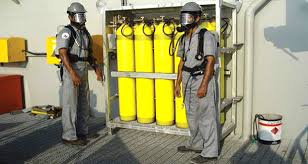
Before handling, it is important that all engineering controls are operating and that protective equipment requirements and personal hygiene measures are being followed. Only trained personnel should work with this product. Do NOT work alone with this product. In event of a spill or leak, immediately put on escape-type respirator and exit the area. Use non-sparking ventilation systems, approved explosion-proof equipment and intrinsically safe electrical systems. Electrically bond and ground equipment. Ground clips must contact bare metal. Eliminate heat and ignition sources such as sparks, open flames, hot surfaces and static discharge. Post "No Smoking" signs. Prevent accidental contact with incompatible chemicals. Use the pressure regulator appropriate for cylinder pressure and contents. Secure cylinder in an up-right position. Protect cylinders from damage. Use a suitable hand truck to move cylinders; do not drag, roll, slide, or drop.
Storage:
Store in an area that is: cool, dry, temperature-controlled, well-ventilated, out of direct sunlight and away from heat and ignition sources, separate from incompatible materials, an approved, fire resistant area, clear of combustible and flammable materials (e.g. old rags, cardboard), on the ground floor or preferably, in an isolated, detached building. Electrically bond and ground containers. Ground clips must contact bare metal. Avoid bulk storage indoors. Empty containers may contain hazardous residue. Store separately. Keep closed.
Accidental release measures for hydrogen sulfide:
Personal Precautions:
Evacuate the area immediately. Isolate the hazard area. Keep out unnecessary and unprotected personnel. Evacuate downwind locations.
- Do not touch damaged containers or spilled product unless wearing appropriate protective equipment.
- Ventilate area. Eliminate all ignition sources.
- Use grounded, explosion-proof equipment.
- Distant ignition and flashback are possible.
Methods for Containment and Clean-up:
Liquid: stop or reduce leak if safe to do so. If not, allow liquid to vapourize. Ventilate the area to prevent the gas from accumulating, especially in confined spaces. Gas: stop or reduce leak if safe to do so. Ventilate the area to prevent the gas from accumulating, especially in confined spaces.
Potential health effects of hydrogen sulfide:
Main Routes of Exposure: Inhalation; eye contact.
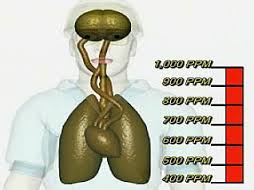 Inhalation:
Inhalation:
VERY TOXIC, can cause death. Can cause severe irritation of the nose and throat. Can cause life threatening accumulation of fluid in the lungs (pulmonary edema). Can cause, excitement, headache, dizziness, staggering, sudden collapse ("knockdown"), unconsciousness, and death Long-term damage may result from a severe short-term exposure. Can harm the nervous system. Can cause lung injury. A single exposure to a high concentration can cause a long-lasting condition like asthma. If this occurs, many things like other chemicals or cold temperatures can easily irritate the airways. Symptoms may include shortness of breath, tightness in the chest and wheezing. {Reactive Airways Dysfunction Syndrome (RADS)}.
Skin Contact:
Direct contact with the liquefied gas can chill or freeze the skin (frostbite).Symptoms of mild frostbite include numbness, prickling and itching. Symptoms of more severe frostbite include a burning sensation and stiffness. The skin may become waxy white or yellow. Blistering, tissue death and infection may develop in severe cases.
Eye Contact:
EYE IRRITANT. The gas irritates the eyes. Direct contact with the liquefied gas can freeze the eye. Permanent eye damage or blindness can result.
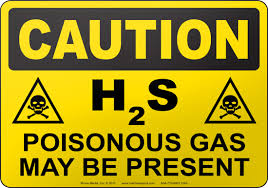 Ingestion:
Ingestion:
Not a relevant route of exposure (gas).
Effects of Long-Term (Chronic) Exposure:
Conclusions cannot be drawn from the limited studies available. May harm the nervous system. Symptoms may include restlessness, reduced ability to think, muscle tremors, memory loss and personality changes. May harm the respiratory system.
Carcinogenicity: Not known to cause cancer.
First aid measures for hydrogen sulfide:
Inhalation:
Take precautions to prevent a fire (e.g. remove sources of ignition). Take precautions to ensure your own safety before attempting rescue (e.g. wear appropriate protective equipment). Move victim to fresh air. Keep at rest in a position comfortable for breathing. If breathing is difficult, trained personnel should administer emergency oxygen. DO NOT allow victim to move about unnecessarily. Symptoms of pulmonary edema may be delayed. If breathing has stopped, trained personnel should begin artificial respiration (AR). If the heart has stopped, trained personnel should start cardiopulmonary resuscitation (CPR) or automated external defibrillation (AED). Avoid mouth to mouth contact by using mouth guards or shields. Immediately call a Poison Centre or doctor. Treatment is urgently required. Transport to a hospital.
NOTE: Victims may pose a threat to responders due to the release of hydrogen sulfide from their clothing, skin, and exhaled air.
Skin Contact: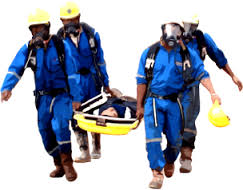
Liquefied gas: quickly remove victim from source of contamination. DO NOT attempt to rewarm the affected area on site. DO NOT rub area or apply direct heat. Gently remove clothing or jewelry that may restrict circulation. Carefully cut around clothing that sticks to the skin and remove the rest of the garment. Loosely cover the affected area with a sterile dressing. DO NOT allow victim to drink alcohol or smoke. Immediately call a Poison Centre or doctor. Treatment is urgently required. Transport to a hospital. Double bag, seal, label and leave contaminated clothing, shoes and leather goods at the scene for safe disposal.
Eye Contact:
Gas: immediately flush the contaminated eye(s) with lukewarm, gently flowing water for 15-20 mint, while holding the eyelid(s) open. Liquefied gas: immediately and briefly flush with lukewarm, gently flowing water. DO NOT attempt to rewarm. Cover both eyes with a sterile dressing. DO NOT allow victim to drink alcohol or smoke. Immediately call a Poison Centre or doctor. Treatment is urgently required. Transport to a hospital.
Ingestion: Not applicable (gas).
First Aid Comments:
Some of the first aid procedures recommended here require advanced first aid training. All first aid procedures should be periodically reviewed by a doctor familiar with the chemical and its conditions of use in the workplace.
Spill and leak procedures:
Persons not wearing protective equipments and clothing should be restricted from areas of spill or leaks until cleanup has been completed.
If hydrogen sulfide i spilled or leaked, the folowing steps should be taken,
1. Remove all ignition sources.
2. Ventilate the area of spill or leak to disperse gas.
3. If in the gaseous form, stop flow of gas. If the source of leak is a cyliner and the leak can not be stopped in place, remove the leaking cylinder to a safe place in the open air, and repair the leak or allow the cylinder to empty.
4. If in the liquid form, allow to vaporize.
Engineering Controls:
Use a local exhaust ventilation and enclosure, if necessary, to control amount in the air. It may be necessary to use stringent control measures such as process enclosure to prevent product release into the workplace. Use non-sparking ventilation systems, approved explosion-proof equipment and intrinsically safe electrical systems in areas where this product is used and stored. Use a ventilation system separate from other exhaust ventilation systems. Filter the contaminated air before it is directly exhausted to the outside. Use leak and fire detection equipment and an automatic fire suppression system.
Safe Worksite Practices in H2S Facilities:
The Job HSE Plan shall include but not limited to:
- Sequential analysis of the task execution and the potential hazards involved.
- The potential sources of H2S under normal and upset conditions (planned and unplanned or emergency releases),
- Events that might release H2S into the work area,
- The maximum concentration of H2S in the process stream(s) and the maximum concentration that might result in the work area, in the event of accidental or anticipated releases,
- System integrity, reliability, and safeguards, including monitoring and alarm systems,
- The volume and H2S content of material that could be released,
- Process and monitoring data, and the validity of such data, especially in light of any changes,
- The activities involved in the planned work, their complexity, and duration, as well as any other relevant factors.
Comprehensive training should be provided for workers in H2S operations:
- Identification of the characteristics, sources, and hazards of Hydrogen Sulfide.
- Proper use of the Hydrogen Sulfide detection methods used on the site.
- Recognition of, and proper response to, Hydrogen Sulfide warnings at the workplace.
- Symptoms of Hydrogen Sulfide exposure.
- Proper rescue techniques and first-aid procedures to be used in a Hydrogen Sulfide exposure.
- Proper use and maintenance of personal protective equipment. Demonstrated proficiency in using PPE should be required.
- Worker awareness and understanding of workplace practices and maintenance procedures to protect personnel from exposure to hydrogen sulfide.
- Wind direction awareness and routes of egress.
- Confined space and enclosed facility entry procedures.
- Locations and use of safety equipment.
- Locations of safe briefing areas.
- Use and operation of all Hydrogen Sulfide monitoring systems.
- Emergency response procedures, corrective action, and shutdown procedures.
- Effects of Hydrogen Sulfide on the components of the Hydrogen Sulfide handling system.
- The importance of drilling fluid treating plans prior to encountering Hydrogen Sulfide
Click the below link to download hydrogen sulfide guidelines documents

Safety guidelines - Hydrogen sulfide
Power point presentation-1- Hydrogen sulfide
Power point presentation-2- Hydrogen sulfide
OSHA Quick card - Hydrogen sulfide
Tool box talk - Hydrogen sulfide awareness
Hydrogen sulfide priniciples
H2S A matter of life or death
